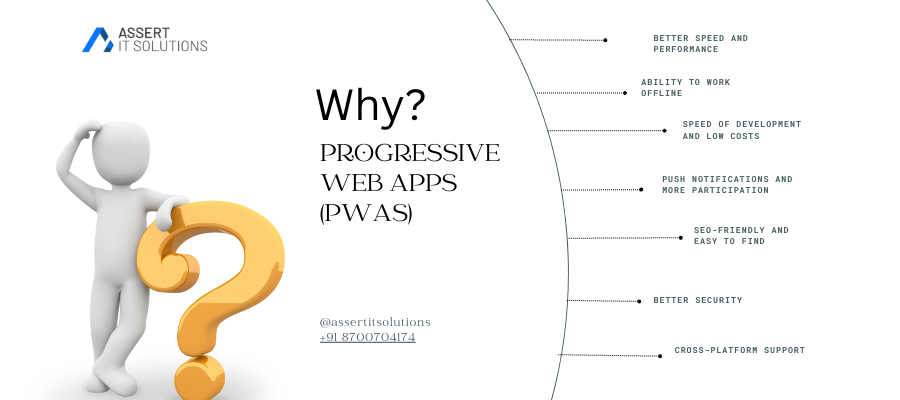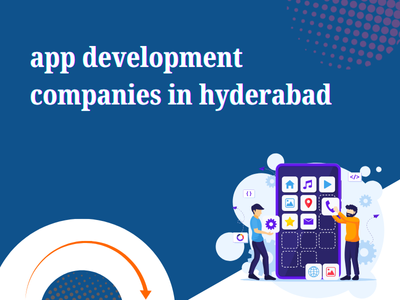Are you sick of websites and apps that work badly?
Progressive online Apps (PWAs) have changed the way websites are built by giving companies and developers a powerful mix of features from both online and native apps. PWAs app offer faster loading times, better response, the ability to work offline, and a better overall user experience. PWAs are becoming more popular as the need for smooth, quick, and reliable digital exchanges grows.
Recently released numbers show that over 54,000 websites now use PWAs. Leaders in the industry talk about the benefits. For example, Lancôme said that using PWAs led to a 17% rise in sales and a 51% rise in mobile sessions.
Alex Russell, one of the main people who worked on making PWAs, says, “PWAs are the future of the web because they combine the best of both worlds to give users better experiences.”
This blog will go into more detail about why PWAs are going to be the future of web development.
What is the concept behind Progressive Web Applications (PWAs)?
Progressive Web Apps, or PWAs, are web apps that use new web technologies to give users an app-like experience right in their browser. In contrast to regular native apps, PWAs don’t need to be downloaded from an app store and can be reached through a URL. They have the best parts of both web apps and mobile development apps:
- Offline functionality: PWAs can work even when they’re not connected to the internet.
- Responsive design: PWAs change to fit different screen sizes and devices, so users always have the same experience.
- Push alerts: PWAs can send push notifications to keep users interested, just like native apps.
- Interface that looks and feels like an app: PWAs have the look and feel of a native app, which makes the experience more engaging.
The world market for PWAs was worth about USD 1.46 billion in 2023, and it’s expected to keep growing at a rate of 31.1% per year from 2024 to 2030.
This rise is caused by more people wanting better user experiences and more people using the internet on their phones.
PWA websites are becoming more popular among businesses and developers who want to improve their online profile because of these features and statistics.
What PWAs are and why they’re the future of web development?
Better speed and performance
One big reason why PWAs are becoming more popular is that they load fast and work well in a variety of network conditions. This is made possible by tools like service workers, which let you cache information and sync data in the background. Some networks may be slow or unstable, but PWAs still work quickly. This lowers the number of people who leave the site quickly and keeps them there.
Google says that progressive web apps (PWAs) can cut page start times by up to 53%, which makes users much more interested and increases conversion rates. Like, the number of pages per session went up by 65% and the number of Tweets sent went up by 75% on Twitter Lite, a PWA version of Twitter.
Ability to work offline
One great thing about PWAs is that they can be used offline. Using service workers, PWAs can store important data locally, so users can keep using the app even if their internet connection drops. This feature is very important for businesses that want to reach people who live in places with bad internet service or for apps that need to be able to be used without interruption.
Speed of development and low costs
It can be expensive and take a lot of time to make and manage separate native apps for iOS, Android, and other platforms. With PWAs, businesses can skip this step by making a single codebase that works on all devices. This cuts down on development costs and time to market while keeping the user experience the same.
The cost of making a Progressive Web App (PWA) is usually three to four times less than making a native app for iOS and Android. For example, Starbucks made a PWA that took up 99.84% less space than its native app and got twice as many users to interact with it.
Push notifications and more participation
PWAs can send push alerts, just like native apps, which makes users much more interested in the app. Users can stay connected and up to date without having to download and run a native app because these notifications can be personalized, sent at the right time, and contain a lot of useful information.
A study by Leanplum found that when businesses add push alerts to their PWAs, user engagement goes up by four times. Trivago, a popular hotel search engine, saw a 150% rise in user engagement after adding push alerts to its PWA technology.
SEO-friendly and easy to find
Search engines index PWAs, which means that you can find them with a regular web search. Native apps need users to go to an app store to get to them, but PWAs can be found with a simple web search or URL, which makes them more visible and available to more people.
Fact: Studies have shown that businesses that use PWAs get better SEO results and are easier to find, which lets them reach a bigger market.
Better security
PWAs are served over HTTPS, which makes sure that all communications between the user and the server are safe and protected. This makes data more private and safe, which is very important for companies that deal with private user data, like banks and e-commerce apps.
According to research by Wired, companies that switched to HTTPS-secured PWAs saw a 50% drop in phishing attacks and other security breaches.
Cross-Platform Support
One of the best things about PWAs is that they work perfectly on a lot of different platforms and devices. When you access a PWA from a desktop, a tablet, or a smartphone, you get the same experience. This is because they are responsive, which means they don’t need separate development work for each device.
Because of these benefits, PWAs are a good choice for companies that want to improve the user experience, get people more involved, and cut costs in today’s competitive digital world.
Stories of PWAs that worked
A number of well-known companies have already started using PWAs, which shows how useful they are:
Pinterest: Pinterest developed a Progressive Web App (PWA) to make the mobile experience better for users. People spent 60% more time on the PWA version than on the mobile website, and they also engaged with it 60% more quickly.
Alibaba: The Chinese e-commerce giant used Progressive Web Apps (PWAs) to improve the mobile experience of its users. This led to a 76% rise in sales across all browsers and a 14% rise in monthly active users on iOS.
Flipkart: India’s biggest online store, moved to a Progressive Web App (PWA) called Flipkart Lite. This led to a 70% rise in sales from app users who made purchases.
Conclusion
Businesses need to keep up with the demand for fast, reliable, and interesting web experiences as mobile use continues to grow faster than PC use. Progressive Web Apps (PWAs) are a great option because they combine the best features of native apps and regular websites. They help with performance, security, and user engagement better than native apps but cost less to make. The switch to PWAs is going to change the future of web development. Big names like Google, Microsoft, and Twitter are leading the way.
Progressive Web Apps are no longer just a trend; they are becoming the standard. This is because user experience is so important for businesses these days. Working with the best software development company in Delhi NCR can help you use PWAs successfully and improve your online presence so you can stay competitive in today’s digital world.
PWA FAQs
How do businesses benefit from PWAs?
PWAs’ speedier performance, offline capabilities, cost-effective development, and user engagement help businesses. PWAs provide a seamless experience across devices and platforms, helping companies reach more customers and increase conversions without developing native apps. They can cut maintenance expenses and speed up loading, benefiting the company and customers.
How are PWAs better than websites?
Service workers cache and sync background data to speed PWA. This speeds up PWAs, even on slow networks, and gives users a nice experience without waiting. PWAs reduce page load times by 53%, enhancing user engagement and conversions.
How about offline PWAs?
Yes! Offline functionality is PWAs’ finest feature. PWAs store essential data and resources for offline use. Users in low-connectivity areas benefit.
How do PWAs affect SEO and discoverability?
Because search engines index PWAs, standard web searches can find them. PWAs can be found online or by URL, unlike native apps, which must be downloaded. Visibility boosts SEO and business reach.
Are PWAs safe?
Indeed, PWAs value security. They encrypt user-server traffic with HTTPS. PWAs provide data privacy and security for e-commerce and banking apps that handle sensitive user data.










